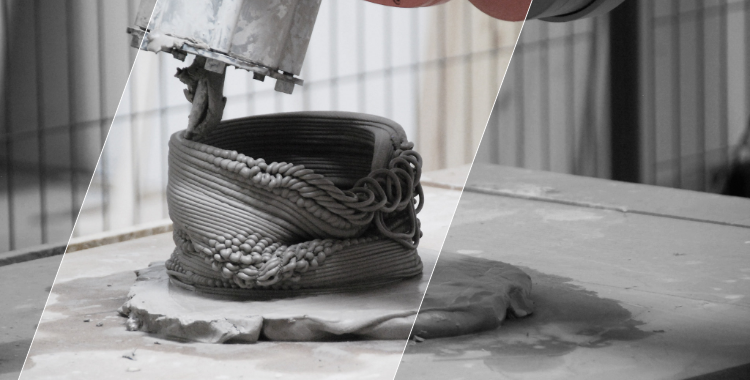
inFORMed clay matter – research project
full credits at 5:15 – music: Out by Ryan Cross
The “inFORMed clay matter” research project focuses on the exploration of integrated computational and algorithmic design strategies with robotic additive fabrication processes applied to clay. The aim is to inform (i.e. to give form, intended both as shape and organization) as in to produce form through the morphogenetic properties and capacities of matter by embedding further information structures within the fabrication process. The implementation takes advantage of custom-designed algorithmic strategies that define the behavior of a 6-axis robotic arm with a bespoke actuator for clay deposition.
Our goal is to go beyond the visual identicality between physical prototype and its digital counterpart, thus making fabrication a purely replicational phase. Instead we code a deployment pattern of triggers for specific material features, organization and behaviors from which physical and aesthetic properties arise; fabrication thus becomes an integral part of a code-matter-machine feedback design process.
The research is articulated in 4 main points:
- anticipate material behavior through digital simulation: test and apply different tool-based conditions and parameters (extrusion direction angle, speed of extrusion, variable layer thickness, etc … ) and evaluate the consequent material behavior in order to get useful feedback for the next iteration of the digital model. The aim is to understand how to embed material properties as code/information during the digital design phase, fine tuning it towards the desired effect-outcome
- Seamless design-to-machine pipeline: shorten the information pipeline from the design process to the constructor machine by directly designing the machine code (choreographing arm movement, speed, poise and nozzle parameters)
- embed morphogenetic properties of clay as key design factors: understand and manage such properties, behaviors and their potential morphological outcomes in order to map and use them as an atlas of expressive possibilities and performances of the material.
- put the fabrication technology constraints at the core of the design process
The final output is then the result of influence, cooperation and conflict of these aspects upon, with and onto one another.
The project video was also part of the Robots in Architecture 2016 exhibition
